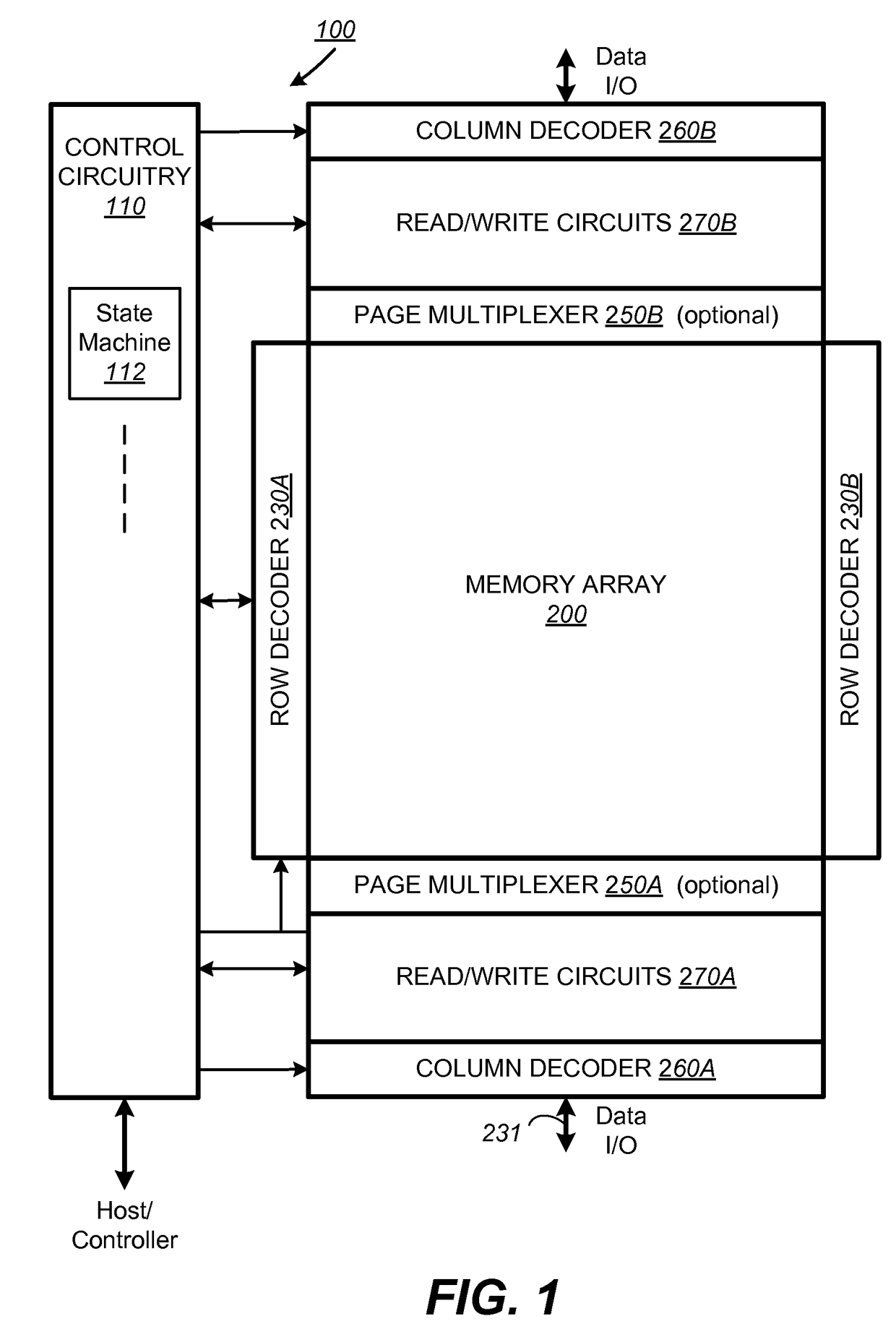Nonvolatile memory and method for improved programming with reduced verify
a non-volatile memory and verification technology, applied in static storage, digital storage, instruments, etc., can solve the problem of widening the programmed threshold distribution for the more programmed states, and achieve the effect of tighter threshold distribution and verification operation
- Summary
- Abstract
- Description
- Claims
- Application Information
AI Technical Summary
Benefits of technology
Problems solved by technology
Method used
Image
Examples
Embodiment Construction
Memory System
[0042]FIG. 1 to FIG. 7 illustrate example memory systems in which the various aspects of the present invention may be implemented.
[0043]FIG. 8 to FIG. 11 illustrate examples of conventional programming techniques.
[0044]FIG. 12 to FIG. 14 illustrate the various aspects and embodiments of the present invention.
[0045]FIG. 1 illustrates schematically the functional blocks of a non-volatile memory chip in which the present invention may be implemented. The memory chip 100 includes a two-dimensional array of memory cells 200, control circuitry 210, and peripheral circuits such as decoders, read / write circuits and multiplexers.
[0046]The memory array 200 is addressable by word lines via row decoders 230 (split into 230A, 230B) and by bit lines via column decoders 260 (split into 260A, 260B) (see also FIGS. 4 and 5.) The read / write circuits 270 (split into 270A, 270B) allow a page of memory cells to be read or programmed in parallel. A data I / O bus 231 is coupled to the read / wri...
PUM
 Login to View More
Login to View More Abstract
Description
Claims
Application Information
 Login to View More
Login to View More - R&D
- Intellectual Property
- Life Sciences
- Materials
- Tech Scout
- Unparalleled Data Quality
- Higher Quality Content
- 60% Fewer Hallucinations
Browse by: Latest US Patents, China's latest patents, Technical Efficacy Thesaurus, Application Domain, Technology Topic, Popular Technical Reports.
© 2025 PatSnap. All rights reserved.Legal|Privacy policy|Modern Slavery Act Transparency Statement|Sitemap|About US| Contact US: help@patsnap.com



